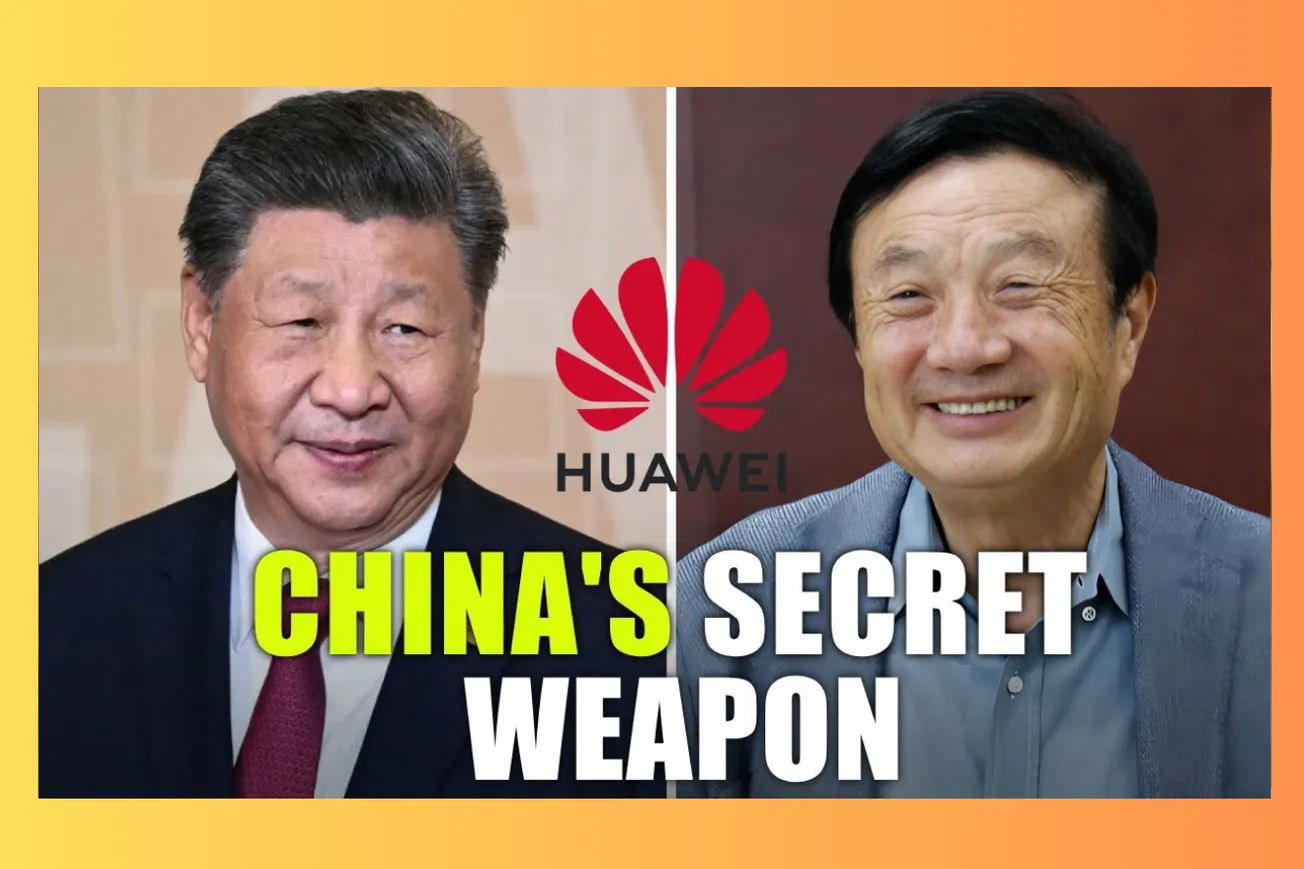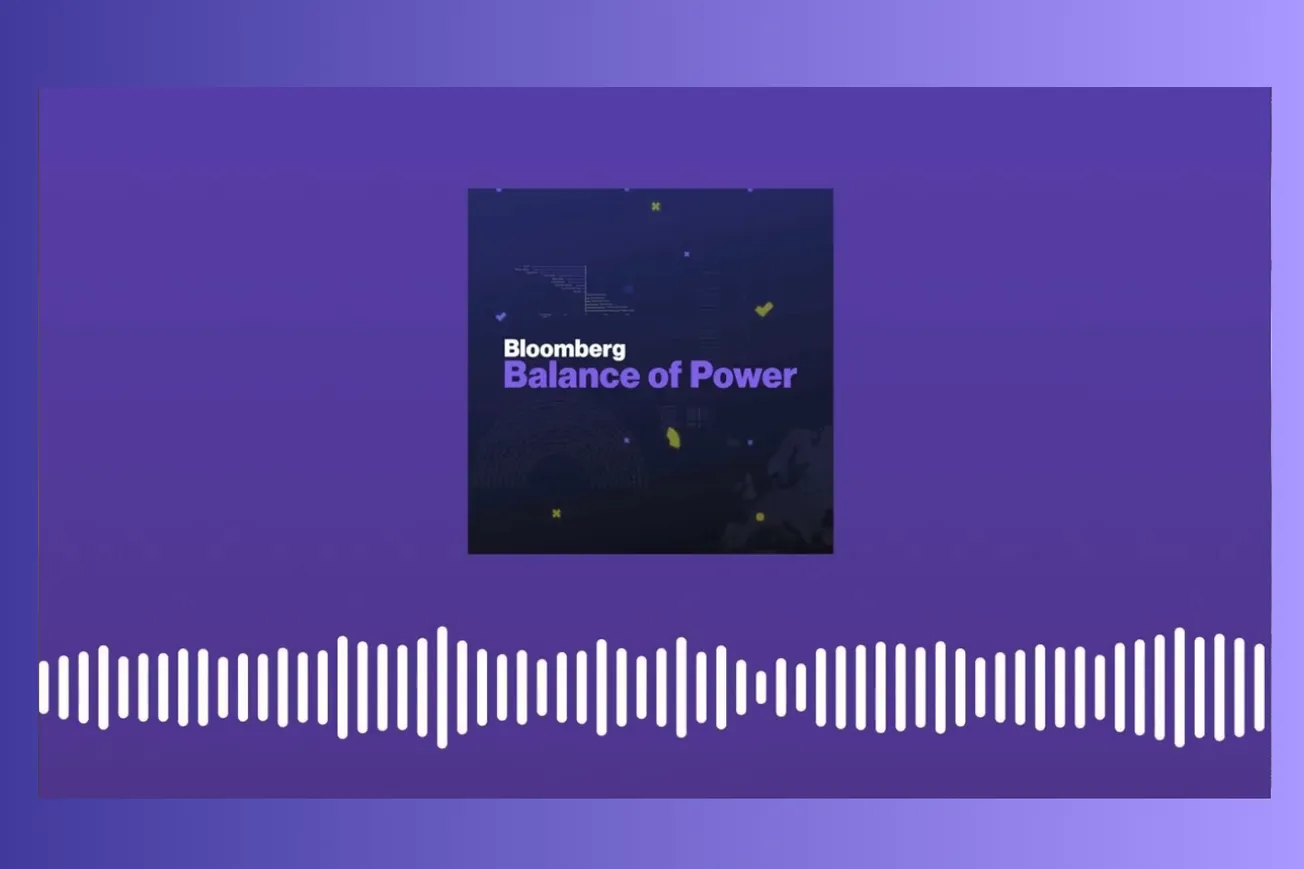Table of Contents
From a rural teenager whose father was beaten nearly to death during the Cultural Revolution to the founder of China's most strategically important technology company—Ren Zhengfei's journey reads like something out of a novel. But this isn't fiction. It's the extraordinary real-life story behind Huawei, the telecommunications giant that has become both China's greatest corporate success and the epicenter of U.S.-China tech tensions.
Key Takeaways
- Ren Zhengfei's Cultural Revolution trauma shaped his paranoid, survival-focused leadership style that prepared Huawei for unexpected crises like U.S. sanctions
- Huawei deliberately avoided easy government money in its early years, focusing on export discipline and massive R&D investment while competitors relied on state contracts
- The company's expansion strategy mirrored China's broader diplomatic approach—targeting risky developing markets first, then gradually moving into developed Western economies
- Huawei's corporate culture blends Western management practices with PLA military discipline and Chinese nationalism, creating an unusually motivated workforce
- The company spent decades building "spare tire" technologies like semiconductors that became essential when Trump-era sanctions cut off Western suppliers
- Ren's obsession with Western art and architecture reflects a complex relationship with the West—simultaneous admiration and rivalry that defines modern China
- Huawei's success came from being more aggressive and customer-focused than sluggish state-owned competitors, proving private enterprise could outperform the planned economy
From Cultural Revolution Victim to Tech Visionary
The story begins with catastrophe. During the Cultural Revolution, Ren Zhengfei's father—a school principal—was targeted for having briefly worked for the Nationalists early in his career. Students beat him with wooden sticks until the sticks broke. The family faced constant persecution. Ren later recalled his father saying he couldn't kill himself because "he didn't want to die before his name was cleared, as it would leave his wife and children with a cloud over them."
Here's what's remarkable about that trauma: Ren transformed it into a business philosophy. Years later, he would tell employees that "the Cultural Revolution was a disaster for the nation, but for us it was a baptism. It made me politically mature so that I wasn't a simple bookworm." The experience taught him that survival required constant vigilance against worst-case scenarios.
This pessimism became Huawei's defining characteristic. Even during flush years, Ren would warn employees they could go bankrupt at any moment. He painted black swan symbols throughout the company campus—a constant reminder that catastrophe could strike without warning. When Trump's sanctions hit in 2018, Huawei was ready precisely because Ren had spent decades preparing for the unthinkable.
The Cultural Revolution also shaped Ren's complex relationship with political power. He learned early that fairness was a luxury he couldn't afford. "Life isn't fair," he repeatedly told his staff. "You have to keep in line in the political system we live in." This wasn't cynicism—it was hard-earned wisdom from someone who'd seen how quickly political winds could destroy everything.
The Unlikely Path to Entrepreneurship
Ren's route to business success was anything but linear. After the Cultural Revolution, he worked as an engineer in the People's Liberation Army for years, thinking that would be his entire career. Then Deng Xiaoping's economic reforms changed everything. Military downsizing left Ren unemployed at nearly 40, shipped off to the capitalist experiment zone of Shenzhen.
The transition was jarring. "I was a soldier for all those years. I didn't join the party. My life was full of adversity," Ren later reflected. "When I think of all that wasted time, I wonder how could I have been so naive and ridiculous that I didn't understand it all being open compromise and shades of gray."
Shenzhen in the 1980s was intoxicating and disorienting—new fashions, foreign trends, Hong Kong capitalism bleeding across the border. Ren felt ancient at 40, struggling to adapt to this totally new world. But that outsider status proved crucial. Unlike entrepreneurs who grew up expecting the system to work for them, Ren started with the assumption that he was on his own.
Building a Different Kind of Chinese Company
When Ren founded Huawei in 1987, China's technology landscape was dominated by sluggish state-owned enterprises where job security mattered more than performance. Employees took daily naps. Innovation was rare. These companies had become synonymous with mediocrity.
Ren deliberately chose a different path. While competitors chased easy government contracts, Huawei focused on exports and private customers. This wasn't ideological—it was practical. State-owned enterprises had a reputation for making companies "sluggish and uncompetitive," Ren observed. "A place where people knew they would stay employed whether they worked or not."
The culture shock was immediate when Huawei partnered with state-owned companies. Huawei managers would "clean house" and fire underperformers, horrifying state employees accustomed to guaranteed employment. Local officials even started complaining: "You can't just be supporting Huawei, you should be supporting us too," one state-owned competitor griped to Shenzhen's science and technology bureau.
The response was brutal: "You guys have been getting subsidies and benefits for so long. Maybe you can't compete with Huawei. You have to look at yourself and see why that is."
The IBM Revolution and Cultural Synthesis
What made Huawei truly unique was Ren's willingness to learn from everyone—Western corporations, Chinese entrepreneurs, PLA military discipline. In the mid-1990s, he hired IBM as a consultant to teach Huawei how to transform from a startup into a multinational corporation.
This wasn't just about management systems. Ren was consciously trying to synthesize a new model of Chinese capitalism. "We are forging a new kind of business system," he told his team. The goal was something that was "not the state-owned enterprise and also not purely the western style of private enterprise."
The result was genuinely distinctive. Huawei combined Western management practices with PLA-style discipline and Chinese nationalist motivation. Employees worked 80-100 hour weeks not just for money, but because they believed they were serving a larger purpose—helping China achieve technological independence.
This wasn't just corporate propaganda. When Trump's sanctions hit, Huawei's head of semiconductor development declared: "For years our unit had worked on spare tires, but now today is the decision of history. Overnight all the spare tires we built have become the main tires. Our years of blood, sweat and tears have been cashed in overnight to help the company fulfill its commitment to keep serving customers."
The Art of Strategic Expansion
Huawei's international expansion mirrored China's broader diplomatic strategy. Start with markets that Western companies avoided—places too risky, too poor, or too politically problematic. Build relationships there. Then gradually move upmarket toward developed economies.
The early customer list reads like a rogues' gallery: Iraq, Iran, Afghanistan, North Korea. These weren't accidents—they were deliberate choices. Western telecom companies were reluctant to enter these markets, giving Huawei an opening. The company's commitment was absolute. During Libya's civil war, when Chinese diplomats evacuated and everyone else pulled out, Huawei kept engineers on the ground. Employees' wives called home hearing gunshots in the background.
"We signed contracts," was Ren's simple explanation. "We'll just have two businesses—one for the government, one for the rebels."
This opportunistic phase paid off handsomely. By targeting markets others avoided, Huawei built a global footprint that eventually included nearly every country on earth. The company moved from selling cheap equipment in developing countries to winning prestigious contracts with British Telecom—legitimacy that paralleled China's own quest for international recognition.
The Technology Gamble That Paid Off
One of Ren's most prescient decisions was massive investment in R&D—around 30% of annual revenue, far more than any other Chinese company. Competitors thought he was crazy. Why spend so much on research when you could just copy Western technology or rely on government contracts?
The answer became clear during the sanctions crisis. For years, Huawei had been building "spare tire" technologies—backup semiconductors, alternative software, redundant supply chains. When Trump cut off access to Western suppliers overnight, these investments became the company's lifeline.
This wasn't just about chips. Huawei had systematically built capabilities across the entire technology stack. Smartphones led to telecom equipment sales. Telecom relationships opened doors for surveillance systems. Each business line reinforced the others, creating a technology ecosystem that was increasingly difficult to replace.
The Surveillance State Connection
Here's where Huawei's story gets complicated. The company's early success partly came from helping governments build more secure communications networks. In Iraq, Huawei helped build fiber optic networks that were much harder for U.S. intelligence to tap than traditional radio communications. George W. Bush eventually ordered those installations bombed to force Iraq back to more easily monitored radio systems.
This pattern repeated globally. Huawei sold "smart city" and "safe city" surveillance systems featuring facial recognition and AI algorithms for tracking trends. The technology was dual-use—helpful for urban planning and traffic management, but also perfect for political surveillance.
The Xinjiang connection made this especially troubling. Huawei's surveillance equipment was used extensively in China's campaign of repression against Uyghurs and other minorities. For Western policymakers, this wasn't just about economic competition—it was about enabling authoritarianism.
The National Security Debate
The fundamental question became: can you separate Huawei's commercial technology from its surveillance capabilities? The company's global cybersecurity chief argued that all telecom equipment inherently tracks user location—"telecommunications networks from all vendors know where you are so as to connect you to those networks. Huawei's equipment is no different from anyone else's equipment."
Different countries reached different conclusions. The UK initially tried a middle path, creating a special facility where Huawei deposited source code and British intelligence officers could examine it for backdoors or security vulnerabilities. This approach satisfied UK officials for years.
The U.S. took a harder line: these risks were "unmitigatable." No amount of technical safeguards could overcome the fundamental problem of Chinese government influence over Chinese companies. When John Bolton was asked why his administration had "decided that a modest amount of base stations on hilltops in England is the epicenter of your new declared war on China," his response was tellingly blunt: "You got to pick something."
The Corporate Culture Phenomenon
What's genuinely remarkable about Huawei is how Ren created a corporate culture that sustained extraordinary employee commitment across decades. This wasn't just about high salaries—though Huawei paid well. It was about meaning and mission.
Employees routinely made enormous personal sacrifices. One executive talked about his "annoying family" never forgiving him for missing the births of both his children due to work commitments. But for these employees, this wasn't just a paycheck—it was life fulfillment derived from helping China achieve technological independence.
The spiritual component was explicit. Ren told employees they could "find meaning in helping their country become technologically sufficient in key technologies." The United States was held up as a "bugaboo" that wanted to hold China back. Working at Huawei meant joining a larger struggle for national dignity.
This approach generated incredible loyalty. When sanctions hit, employees didn't just adapt—they doubled down. The "spare tire" mentality that Ren had instilled for decades suddenly made perfect sense.
The Paradox of Western Influence
Perhaps the most fascinating aspect of Ren's story is his complex relationship with Western culture. The man who built China's most strategically important company was simultaneously one of its biggest Westernophiles.
Ren's first trip to Las Vegas left him awestruck—he thought it was the most beautiful city he'd ever seen. This from someone who'd grown up so rural that moving to the county seat as a teenager was his first encounter with a two-story building. Later, he built a Huawei campus featuring replicas of Versailles, the Kremlin, and other Western architectural landmarks.
Critics mocked these "palaces," but Ren had a practical explanation: "We build them for the customers." Many of Huawei's international clients came from developing countries experiencing their own rapid transformation. The campus's glitz and glamour appealed to officials who understood China's journey from poverty to prosperity.
Ren encouraged employees to cultivate themselves through Western art, music, and literature. He collected oil paintings from around the world, had employees help transport them to China, and often referenced international culture in business meetings. His youngest daughter grew up largely in the UK.
This wasn't contradiction—it was synthesis. Ren admired Western achievements while determined to surpass them. The campus replicas weren't just copies—they were proof that China could build anything the West had created, and do it better.
The Succession Question
Now in his 80s, Ren faces the challenge that destroys most founder-led companies: succession. Huawei has adopted a "collective leadership model" similar to China's government structure, with multiple senior executives sharing decision-making responsibilities. But Ren remains the ultimate authority, and it's unclear when or how he'll step back.
This mirrors a broader question about China's development model. Can institutions built around charismatic founders survive their creators? Huawei's early success came from Ren's unique combination of paranoia, ambition, and cultural synthesis. Whether that can be systematized and transferred to successors remains an open question.
The Global Technology Struggle
Huawei's story illuminates the broader transformation of global technology competition. For decades, the assumption was that Chinese companies would remain stuck in low-value manufacturing while Western firms dominated high-tech innovation. Huawei shattered that assumption.
The company's rise forced a fundamental recalibration of Western technology strategy. Suddenly, Chinese firms weren't just customers or suppliers—they were direct competitors in the most advanced technologies. The comfortable division between Western innovation and Chinese manufacturing was disappearing.
This created new dilemmas for policymakers. How do you compete with a company that combines capitalist efficiency with state backing and nationalist motivation? Traditional antitrust and competition frameworks weren't designed for this challenge.
Looking Forward: The Technology Cold War
Huawei's trajectory from sanctions target to technology independence pioneer offers a preview of broader U.S.-China competition. The company's ability to develop alternative supply chains and "spare tire" technologies demonstrates that technological decoupling, while expensive, is possible.
The question is whether this fragmentation serves anyone's interests. Huawei's story shows that determined countries can build technological independence when forced to. But the global costs are enormous—duplicated research, reduced efficiency, slower innovation.
For China, Huawei represents proof that the country can compete with anyone in advanced technology. For the United States, it represents a wake-up call about complacency and the limits of technological dominance.
The Human Story Behind Geopolitics
Ultimately, Huawei's rise reflects the broader human drama of modern China. Ren Zhengfei's journey from Cultural Revolution victim to technology pioneer mirrors his country's transformation from Mao-era chaos to global power.
The story is both inspiring and unsettling. Inspiring because it shows how individual determination can overcome seemingly impossible obstacles. Unsettling because it demonstrates how historical trauma can fuel nationalistic competition that destabilizes global cooperation.
Ren's black swan obsession—born from watching his father beaten nearly to death for political reasons—prepared Huawei for crises that blindsided Western competitors. But that same paranoid preparation contributed to the technological arms race that now defines U.S.-China relations.
As Ren approaches the end of his extraordinary career, his legacy remains deeply ambiguous. He built one of the world's most successful technology companies and helped lift China into the front ranks of global innovation. But he also created capabilities that enable surveillance states and accelerated the fracturing of global technology cooperation.
The house that Ren built stands as both monument to human achievement and warning about the costs of great power competition. In trying to understand China's rise and America's response, there's no better place to start than with the remarkable story of Huawei and its visionary, complicated founder.





